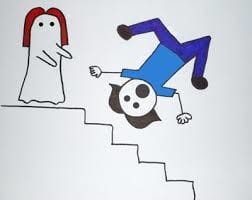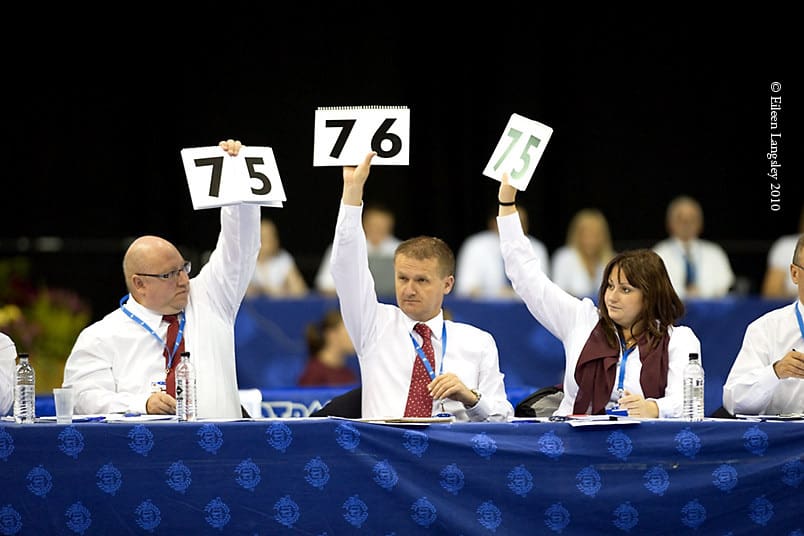We all took a personality test, so how do we use what we learned in our coaching conversations?
That’s what the Customer Service Manager asked me during a training program on coaching.
“We all took a personality test and I am like this ___ and my colleague is like that ___, So how do we bring the results of our personality tests into the quality coaching conversation?”
That’s a fair question.
One I hear now and then in our coaching classes.
So I asked this question in return
Generally in Customer Service communication, I advise folks to not answer a question with a question.
That approach can be rude – even aggressive.
But my intention in answering a question with a question here was to get us all to dig more deeply into what the answer might be.
Here’s what I asked –
“Before we get into the specifics of the coaching conversation, can you talk to each other about the ways you’re already using what you learned from the Personality Test in all of the other conversations that you’re having with the people around you?”
I continued…
“Because the quality coaching conversation is only one of many possible conversations you’re having with your people throughout the day.
For example, you might share with a Team Member that you observed something good or you observed something not so good.
Perhaps you praised something or provided guidance on a task. Maybe you asked someone to stay late if they could. You might have even given a formal performance review.
So stop now and ask yourselves – how have you used what you learned in the personality tests in any of these other conversations?”
Your answers here will serve as are clues to how you can apply what you know about someone in a coaching conversation.”
The room got quiet and I bet you can guess why
 It turned out that taking the personality test was kind of fun.
It turned out that taking the personality test was kind of fun.
And learning about what kind of people we were was also kind of fun.
But what folks had learned about each other hadn’t been put into any kind of formal practice.
It had been treated like a parlor game.
And wasn’t appearing in any of the conversations that people had with each other.
It’s important to get to know the people you work with on an individual level
As you learn about the people you work with – and they learn about you – the decisions you make mutually about working together apply to the entire relationship.
To all the conversations that you have. Not just the coaching conversation.
This ‘aha moment’ for the group completely changed the question.
From “How can we use what we learned from our Personality Tests in a coaching conversation?” to “How can we use what we learned in our Personality Tests to improve and build our relationship with each other?”
And I admit that made me smile.
https://www.omnitouchinternational.com/dear-trainers-engagement-shouldnt-be-the-goal
Thank you for reading!
Thank you for reading this article today!
If you’d like to stay up to date on our articles and other information just send over your email address or add it to the contact form on our website.
Thank you!
Daniel Ord
www.omnitouchinternational.com
Photo by Nguyen Dang Hoang Nhu on Unspla









 In my last Finance role, I worked at a direct marketing company that sold music, children’s toys and gardening tools via TV commercials and catalogs.
In my last Finance role, I worked at a direct marketing company that sold music, children’s toys and gardening tools via TV commercials and catalogs. And no, you don’t have to do what I did. You don’t have to start your own company and spend $380,000.
And no, you don’t have to do what I did. You don’t have to start your own company and spend $380,000. If you’d like to stay up to date on our articles and other information just send me your email or add your details to the contact form on our website.
If you’d like to stay up to date on our articles and other information just send me your email or add your details to the contact form on our website.

 If you’re running a Contact Centre or Customer Experience group and your folks need a PhD to understand a metric that’s supposed to guide their behavior, you’ve already got a problem.
If you’re running a Contact Centre or Customer Experience group and your folks need a PhD to understand a metric that’s supposed to guide their behavior, you’ve already got a problem. I sometimes find that people who are new to the industry have an easier time to stand up and ask, “Why do we do this? What is this report supposed to help us with? Is it actually helping?”
I sometimes find that people who are new to the industry have an easier time to stand up and ask, “Why do we do this? What is this report supposed to help us with? Is it actually helping?”








 From Occupancy rates through to Net Promoter Score we have dashboards and dials for everything. (Even though not everything matters.)
From Occupancy rates through to Net Promoter Score we have dashboards and dials for everything. (Even though not everything matters.) We monitor Customer interactions, document our findings and talk to the Agents about their performance.
We monitor Customer interactions, document our findings and talk to the Agents about their performance.

 It tells you how you did.
It tells you how you did.

 Forrester, Jeanne Bliss, Beyond Philosophy all openly share well thought out maturity models.
Forrester, Jeanne Bliss, Beyond Philosophy all openly share well thought out maturity models.




 Ask yourself.
Ask yourself.


 Customer Experience is fascinating in part because of the depth and breadth of the subject matter.
Customer Experience is fascinating in part because of the depth and breadth of the subject matter. The lady at the salad counter at the grocery store, the bus driver, the Call Centre Agent that helped you untangle a sticky problem.
The lady at the salad counter at the grocery store, the bus driver, the Call Centre Agent that helped you untangle a sticky problem. If so that’s cool.
If so that’s cool. You told your friend you would meet them for coffee, but something came up.
You told your friend you would meet them for coffee, but something came up.
 Organizations could apply for the Mystery Shopper program and potentially win an award.
Organizations could apply for the Mystery Shopper program and potentially win an award. The cover slide whirred up on the screen.
The cover slide whirred up on the screen.
 They’re used extensively in the banking & finance industry.
They’re used extensively in the banking & finance industry. While it’s rare to see a Public Sector program skew heavily to the Customer experience compliance based programs ensure a level of essential service is provided.
While it’s rare to see a Public Sector program skew heavily to the Customer experience compliance based programs ensure a level of essential service is provided. That when a certain telephone number is dialed at a certain time of day – that the call goes to the right place.
That when a certain telephone number is dialed at a certain time of day – that the call goes to the right place. One of our favorite Customer Experience Mystery Shopper programs was with a high end hotel.
One of our favorite Customer Experience Mystery Shopper programs was with a high end hotel.
 If you don’t know what emotions you are trying to evoke – how will your Frontliners know?
If you don’t know what emotions you are trying to evoke – how will your Frontliners know?





















 That’s always one of the great things about participating at an Awards event.
That’s always one of the great things about participating at an Awards event. There were 3 key complaint handling practices that I picked up from interacting with all the Complaint Handling Teams.
There were 3 key complaint handling practices that I picked up from interacting with all the Complaint Handling Teams. Their strategic purpose was clear – to understand their Voice of the Customer.
Their strategic purpose was clear – to understand their Voice of the Customer. Equipped with the results of their analyses, the Complaint Handling Team went to their Management to propose changes to processes or rules that caused Customer discomfort.
Equipped with the results of their analyses, the Complaint Handling Team went to their Management to propose changes to processes or rules that caused Customer discomfort.
 Interestingly, many complaints stemmed from questions about bills and statements.
Interestingly, many complaints stemmed from questions about bills and statements. The Customer gets either one point of contact to deal with them all the way through.
The Customer gets either one point of contact to deal with them all the way through. All the Complaint Handling Teams were able to demonstrate a financial ROI to back up their work.
All the Complaint Handling Teams were able to demonstrate a financial ROI to back up their work.